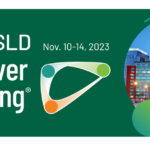Recent findings from the phase III IMbrave050 trial presented at the 2023 American Association for Cancer Research (AACR) Annual Meeting have unveiled a significant advancement in the treatment of hepatocellular carcinoma (HCC). The trial investigated the impact of adjuvant therapy with atezolizumab in combination with bevacizumab on recurrence-free survival (RFS) in HCC patients at high risk of recurrence following curative resection or ablation. The study’s principal investigator, Professor Pierce Chow of the National Cancer Centre Singapore, revealed the trial’s results, suggesting a potential paradigm shift in the management of high-risk HCC patients.
Research Background:
Hepatocellular carcinoma patients who undergo curative resection or ablation face a substantial risk of postoperative recurrence. The 5-year recurrence rate in this patient group is 63%, with even higher rates in those with specific high-risk features such as large tumors, poor tumor differentiation, multiple tumors, or vascular invasion. Disease recurrence tends to peak 1-2 years or approximately 4-5 years after surgery[2].
Building on the success of the phase III IMbrave150 trial, which established atezolizumab plus bevacizumab as the standard treatment for unresectable advanced HCC[3], the IMbrave050 trial aimed to determine if this combination therapy could also benefit resectable HCC patients at high risk of recurrence due to specific high-risk features.
Methods:
The IMbrave050 trial enrolled newly diagnosed HCC patients who had undergone curative resection or ablation, were Child-Pugh class A, and had an ECOG performance status of 0 or 1. To qualify for the study, patients needed to meet specific criteria for high risk of disease recurrence, which included various factors related to tumor size, vascular invasion, and tumor differentiation.
Participants were randomly assigned in a 1:1 ratio to receive atezolizumab in combination with bevacizumab or undergo active surveillance. Treatment continued until disease recurrence or intolerable toxicity. Patients in the active surveillance group were allowed to cross over to receive the combination therapy after experiencing confirmed recurrence or undergoing a second resection or ablation.
Results:
Baseline Characteristics: The baseline characteristics of both groups were well-balanced. Most patients were male (83.1%), of Asian ethnicity (81.6%), and from the Asia-Pacific region (71.2%). The majority had an ECOG performance status of 0 (78.9%), and most were diagnosed at BCLC stage A (84.4%). PD-L1 status was similar between the groups. Hepatitis B was prevalent in both groups (62.3%); 10.8% had hepatitis C.
RFS and OS Data: The combination therapy group demonstrated a significant improvement in 12-month RFS rates (78%) compared to the active surveillance group (65%). Disease recurrence rates were also lower in the combination therapy group (20%) versus the active surveillance group (34%). Overall survival data were considered immature at the data cutoff date.
Safety: Adverse events occurred in the majority of patients in both groups, with more treatment-related adverse events reported in the combination therapy group. Serious adverse events were also more common in the combination therapy group, but the safety profile was consistent with the individual drug profiles.
Conclusion:
The results of the IMbrave050 trial represent a major breakthrough in the treatment of hepatocellular carcinoma. Atezolizumab combined with bevacizumab has shown a statistically significant improvement in recurrence-free survival for high-risk HCC patients following curative resection or ablation. This adjuvant therapy approach offers new hope for improved survival and disease-free survival in a patient population with a significant unmet clinical need. The findings have the potential to reshape the management of HCC and provide a more optimistic outlook for these patients.


